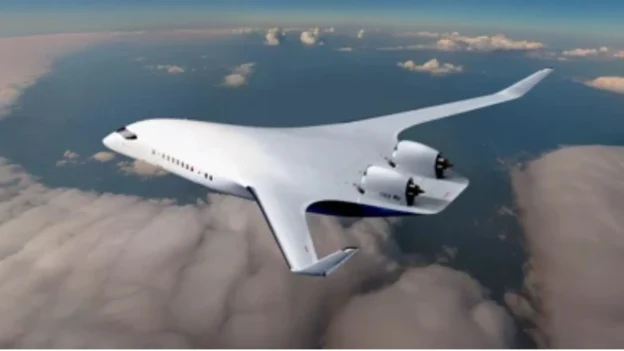JetZero and SHZ Advanced Technologies have announced a collaboration to customize liquid hydrogen storage and distribution systems for the liquid hydrogen (LH2) on a future variant of the Z4, the full-wing aircraft developed by the U.S. company.
The agreement seeks to integrate technologies patented by the French firm SHZ within the framework of NASA’s AACES program, with a view to promoting more efficient and less polluting aviation.
A design that redefines efficiency
The Z4 is distinguished by its integrated fuselage-wing integrated wing-fuselagewhere the entire structure contributes to lift. This feature, in addition to reducing drag, makes it possible to accommodate cryogenic hydrogen tanks. cryogenic hydrogen tanks without affecting seating capacity.
In its initial configuration, the Z4 will use fossil fuel with up to 50% higher efficiency, while the incorporation of LH2 as an alternative fuel is being evaluated.
Betting on liquid hydrogen
SHZ, a French startup specializing in hydrogen storage solutions for hydrogen storage solutionswill contribute its expertise and 14 patents, including an LH2 pump-compressor.
This technology will be key to adapting the Z4 to the use of liquid hydrogen, an energy vector with the potential to transform commercial aviation. The company is working on applications for land, sea and air, which strengthens its ability to adapt to the aeronautical sector.
Institutional support and long-term vision
The collaboration is part of NASA’s AACES (Advanced Aircraft Concepts for Environmental Sustainability 2050) project, which seeks to promote clean technologies in air transportation.
JetZero was selected by the agency in 2024 to study the use of cryogenic hydrogen in commercial flights. cryogenic hydrogen in long-range commercial long-range commercial flights. The goal: to accelerate the decarbonization of the sector towards zero-emission goals for 2050.
Aerodynamics and sustainability, in the same direction
The design of the Z4s design, with fuselage-mounted engines, considerably reduces noise in airports and nearby communities. This advantage, coupled with the potential use of hydrogen, positions it as a viable option for quieter aviation. quieter and cleaner aviation. and cleaner aviation.
The versatility of the airframe also facilitates the integration of future developments without compromising the basic structure of the aircraft.
Source and photo: JetZero

